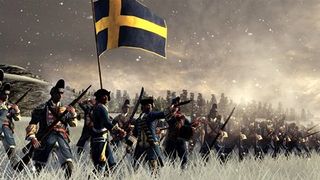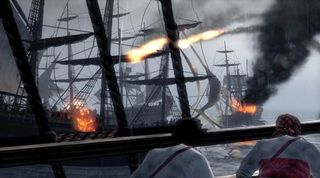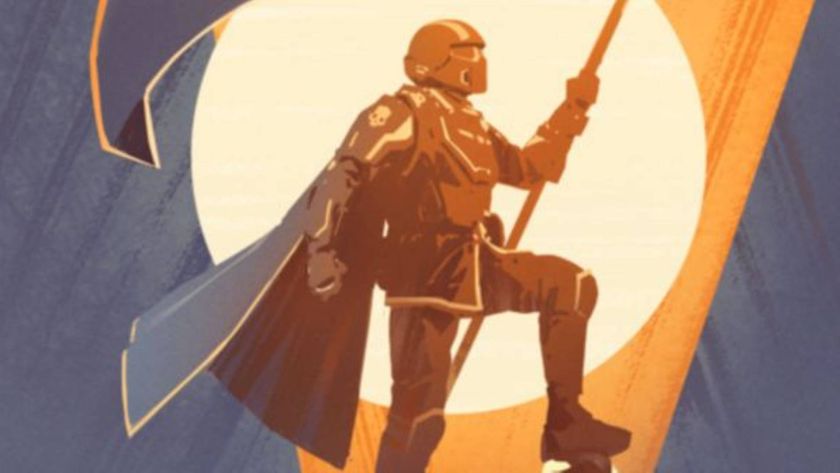Empire: Total War
We clock up some hands-on time with the latest code of Creative Assembly's epic RTS
In a clear attempt to provide greater flexibility, Creative Assembly have expended a great deal of effort in fleshing out Empire’s non-combat features. The developers even claim that you’ll be able to play the whole game with minimal amount of conflict if you’re canny enough, though sadly our playtest wasn’t long enough to test this theory.
Empire’s diplomacy system has been greatly streamlined, with a single diplomatic interface negating the tedium of micromanaging individual diplomats on the campaign map. Alliances have become far more complex affairs, and you can even try to manipulate other nations to do the fighting for you. Attack an enemy and your allies will be reluctant to come to your aid, but goad your foe into an invasion and your allies will send reinforcements without hesitating. Ally with a faction sandwiched between you and your enemy, and the opposition will have to come through them, before they can get to you.

One of the best ways of needling the enemy is to use a new unit called the Gentleman. This loveable rogue can be sent into enemy territory to duel opposition commanders or assassinate dignitaries, allowing high rankers to be eliminated without the need for battlefield confrontation. Wipe out a number of a faction’s generals and they’ll declare war. The Gentleman also has several other key skills. Ensconce him in an enemy’s university and he’ll steal their research, or if he’s placed in one of yours, speed your discovery of new technologies. The Rake is another debuting unit that acts as an all-in-one spy, diplomat and saboteur, making for a far more streamlined approach to subterfuge.
As our playtest drew to its inevitable close and with both the land battles and campaign map exuding the kind of potential that should have every strategy gamer palpitating, there was just enough time to sample Empire’s all-new naval battles. These watery conflicts proved far slower, more considered affairs than their terra firma equivalents. Wind speed and direction were major factors in determining the maneuverability of vessels, with ships battling the elements while exchanging cannon fire with a British fleet.
Turning each ship so that enemy vessels came into a hull’s shooting range proved the greatest challenge, one made all the more difficult by the need to manually reload cannons after firing at the enemy. A secondary challenge was gauging which of the three shot types to use. Besides the basic cannonball, you’ve got chain-shot – half-cannonballs linked together by thick chains. These take down enemy masts and leave ships sitting ducks for barrages by standard cannonballs that knock gaping holes in enemy hulls. Finally, there is grapeshot. This is a canvas bag full of metal balls turns a ship’s crew into hunks of flesh, softening up the enemy in preparation for boarding.

While these battles were certainly tense and tactical, it’s still too early to make any concrete judgments on them. We’ll save that for the review. Make no mistake, Empire: Total War is shaping up to be one the most ambitious war simulations around. Not only is its scope superior to its predecessors, it’s also promising to scale previously uncharted heights of accessibility. With land battles bolstered by some radically improved AI and the added tactical dimension provided by gunpowder weapons and the ability to garrison troops, along with a highly promising first attempt at real-time 3D naval warfare, Empire: Total War has the tools to take strategy gaming to the next level.
If the polish can match the vision then Empire won’t just be another war simulation, it’ll be pure, unadulterated strategy entertainment of the very highest caliber. Or in a word, fun.
Sign up to the 12DOVE Newsletter
Weekly digests, tales from the communities you love, and more
Jan 13, 2009

Keanu Reeves is returning for John Wick 5 as the franchise expands with an anime prequel series and a Caine spin-off movie

Ex Nintendo PR managers say the Switch 2 generation is likely to see the retirement of "several of the major developers at Nintendo who we have known for 40 something years"

Helldivers 2 CEO says industry layoffs have seen "very little accountability" from executives who "let go of one third of the company because you made stupid decisions"










